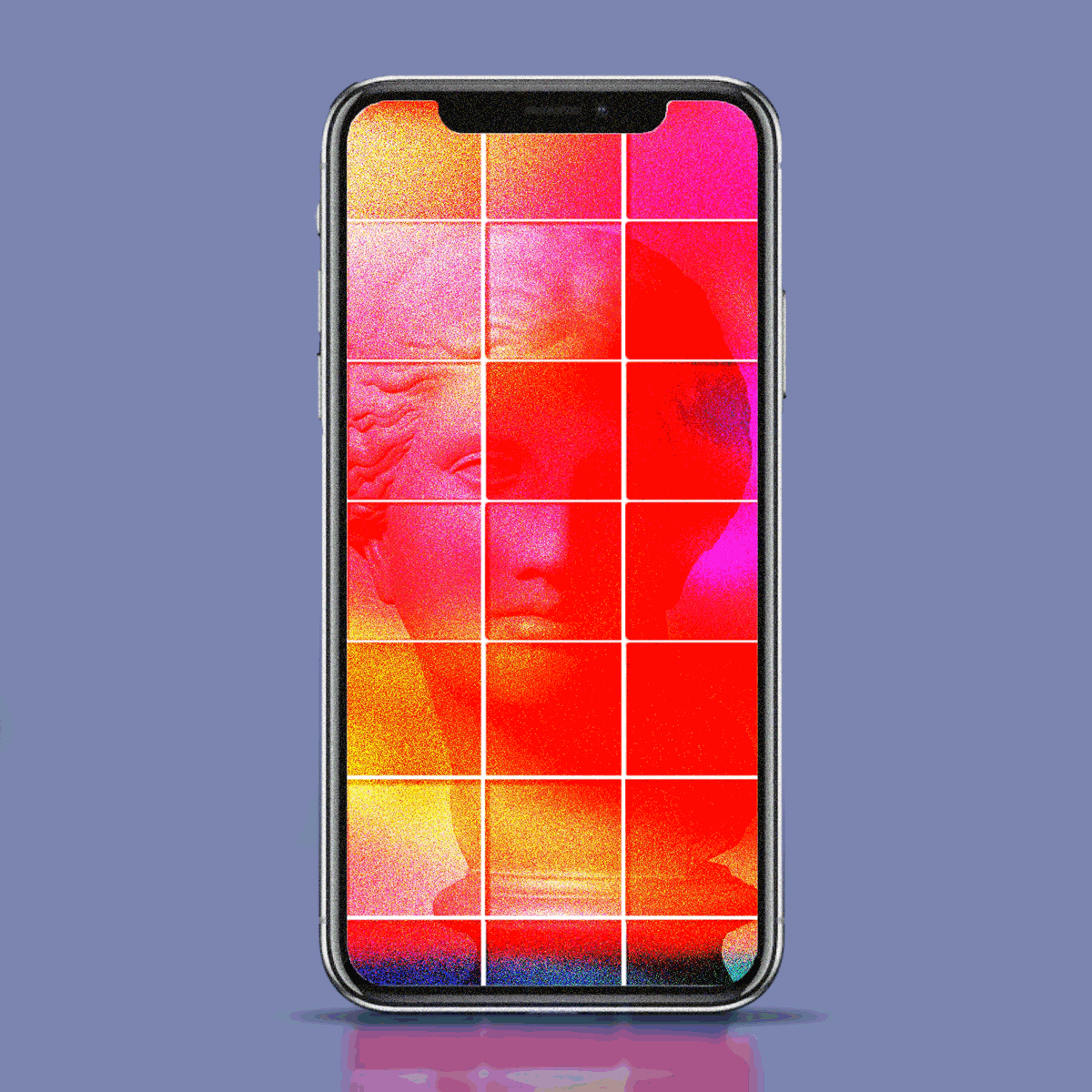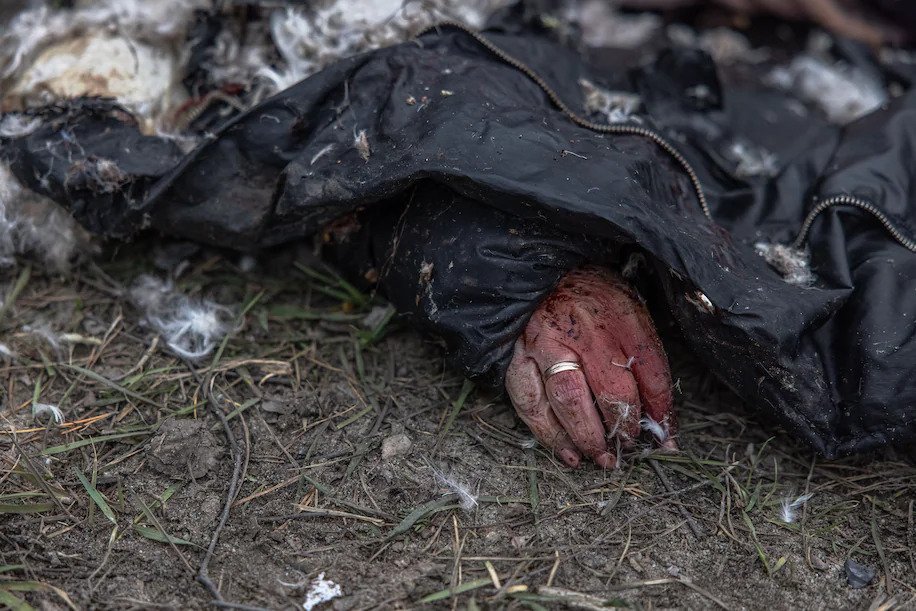Our smartphones are stuffed with photos. The challenge is finding the good ones. The following is a mix of Ukraine War coverage – and a few comments on that smart phone camera roll you yourself sit on.

10 April 2022 (Berlin, Germany) – Even the most horrifying war photographs may leave you with the odd sense of being an unwanted tourist. It is a dreadful tourism, at a terrible cost, but almost as soon as the eye notices the carnage and destruction, it starts registering small and perhaps irrelevant details. The dirt is a darker red, the trees a deeper shade of green, the architecture and dress are different, as are the street signs, the pavement and the cars.
It feels grotesque to look at suffering and suddenly find yourself noticing the same things that strike you when we get off a plane after a long flight to another hemisphere. But that’s how photographs work, and it may be one of these small details that conveys what the French critic Roland Barthes called “the punctum”, the photograph’s “sting, speck, cut, little hole” that gives the image emotional power.
Today we must wrestle with piles of bodies in black bags.
The punctum of the photographs coming out of Ukraine is different from that carried by photographs of recent wars and disasters in Haiti, Myanmar and Syria. At least, it functions differently for audiences in Western and developed countries, where Ukraine feels closer and more familiar.

This fact must be acknowledged simultaneously with the role that race and cultural difference play in how photographs are read and circulated. In the West, ugly but resilient ideas about civilization, exoticism and the primitive are used to keep the suffering of people with brown and black skin at a safe emotional distance, often by minimizing or dismissing their full humanity.
But the fact that Ukraine feels more culturally familiar to many people watching these events closely has had a profound impact not just on the kinds of images that are circulating, but also how they circulate. And it has changed the terms of some of the essential debates about war photography, including the dignity and privacy of victims, and the status of traumatic images within an image-saturated media world.
Earlier this week I published a post on the extensive documentation of the war, part suppled by thousands of smart phones, much of it from the Ukraine civilian population. Combined with satellite imagery, unencrypted military communications, and open source intelligence it has also afforded news organizations an opportunity to provide more detail and context about events in Ukraine than in any war coverage previously produced.

ABOVE: People charge their cellphones in a public building in Bucha, Ukraine on 7 April (photo used courtesy of Ronaldo Schemidt, photographer for Agence France)
As I noted earlier in my series on this war, a CBS reporter stumbled with the power of “cultural proximity” early in the war by saying “This isn’t a place, with all due respect, you know, like Iraq or Afghanistan that has seen conflict raging for decades. You know, this is a relatively civilized, relatively European … city.”
He was forced to apologize – as he should have, immediately. Because Ukraine is not more civilized than any other country, and the destruction of European cities is not more terrible than the destruction of cities in Afghanistan or Iraq. But because Ukraine is European, people in Europe and culturally adjacent to Europe process these images differently, with fewer detours into those tourist details. Images may circulate and accumulate meaning more quickly in the Western media world, because their content requires less basic interpretation or captioning. The punctum of these images is not difference, but sameness, and that seems to bring the horror of war more efficiently to the foreground.
I shall return to this topic in a subsequent post but I want to share an article my research team discovered when I was preparing this piece. It is an article in last week’s New Yorker magazine by Michael Johnston who notes that everybody’s camera role probably has a masterpiece in it. A few paragraphs:
The late Erich Hartmann, a past president of Magnum, once showed me his friend Henri Cartier-Bresson’s negatives and contact sheets, stored at the famous photo agency’s New York offices in rows of three-ring binders lined up on shelves. Sheet after sheet contained not a single photograph I recognized. Some worked, most didn’t—not even for H.C.B.
Happily, there’s another side to the equation. If you take enough photographs, it’s almost inevitable that you’ll eventually get an extraordinary one, for reasons you might not understand. Cartier-Bresson was a hunter in his youth, and photographers have often described his brand of street photography as a kind of “hunting,” but it might be more accurate to say that it was like fishing—a sport in which you can do a lot to optimize your chances but still can’t know for sure what you’re going to get. Chance is pretty much always in play. Sometimes everything comes together before the lens, and the visual world sorts itself within the frame, and you get a little gift. None of us really knows for sure if or when the magic’s going to happen.
Today, of course, we’re in the age of digital photography. Back in the eighties, I remember reading that six billion photographs were taken each year, a number that seemed as big as the ocean; currently, although exact numbers can’t be known, the world probably collects that many images every three and a half days. There’s a new way in which we can miss out on great photographs: they can be buried forever in the digital tsunami”.
[ The full article is here and as of the time I write this (4pm Berlin time) it is not behind the New Yorker pay wall. If you find that it is, email my media team and they will send you a PDF. The media team email is below.]
Statistically, of course what Johnson says must be true. He advises that you should “scroll your roll”. I think we should leave it to AI to have a stab at finding the very best ones. That happens already on the iPhone to some extent – it produces “memories” – but I think it offers far too many. There are far, far better AI systems for digital photography as I have indicted in previous posts.
And, of course, AI can’t search for “emotional impact”. But if you “train” it on a few photos you pick as “favorites” you might be surprised on the result.
* * * * * * * * * * * * * * * * *
For our Ukraine War coverage archive,
* * * * * * * * * * * * * * * * *
Other work studios: Berlin DE and Paris FR